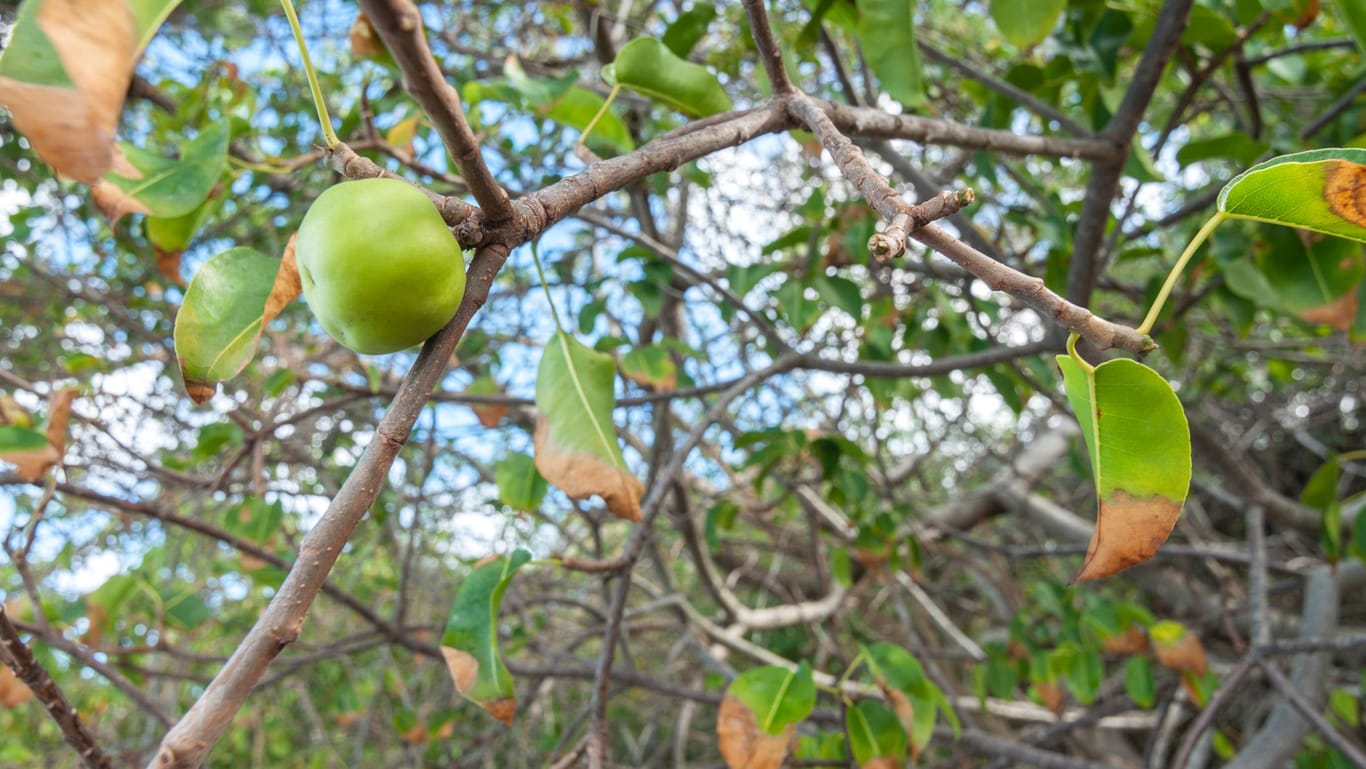 Poisonous apple of paradise: Even small contact with the toxins of the manchineel tree triggers skin diseases.
Poisonous apple of paradise: Even small contact with the toxins of the manchineel tree triggers skin diseases.
Is the apple of paradise really that poisonous? We explain in this article what the manchineel tree, as it is technically called, is all about.
Occurrence of the manchineel tree
The manchineel tree is the most poisonous tree in the world and is primarily native to the tropics. You can find it in Florida , the southern United States of America, the Bahamas, the Caribbean , Central America and northern South America. This tree has also been established in West Africa and the Galápagos Islands. It grows near the beach on sandy and stony soil and holds the coast together with its strong roots. It tolerates salty sea water, wind and drought.
Look
The evergreen, up to 15 meter high tree with a branched crown has gray to brownish bark that becomes more cracked with age. Its partly shiny elliptical leaves grow up to 10 centimeters long. The fruits, which are up to twelve centimeters in size and are reminiscent of apples, are greenish-yellow. They tempt you with a sweet taste, which quickly becomes bitingly spicy and shows its deadly curse. The entire tree contains caustic milky sap.
Remember the story of Adam and Eve eating from the tree of knowledge? We don’t know what the story is about the expulsion from paradise. But what we do know is that the tree that bears heavenly apples should be avoided at all costs.
Effect
The green and yellow apples attract you while walking on the beach. But the fruits, also known in Spanish as “apples of death” (Manzanilla de la muerte), are dangerous. And the power of death does not only lurk in the fruits.
Consumption of the fruits
If the sweet taste turns peppery after eating, symptoms of poisoning appear:
- Vomiting and stomach pain
- Swelling of the lips, tongue and throat
- scabbed stomach lining and bleeding in the stomach and intestines
Skin contact
Once you have discovered the tree, do not touch it under any circumstances, because the toxins, which are also found in the tree bark in a milky white substance, are not without their effects. This is how they work:
- Skin diseases with blistering
- severe conjunctivitis and corneal inflammation
- Formation of eczema caused by falling raindrops that have absorbed the tree’s toxins
breathe in
Also avoid the fumes that the tree gives off. It is not suitable as firewood. This is what happens when you breathe in:
- Headache
- temporary blindness
See a doctor as soon as possible because if left untreated, poisoning will result in death. Enjoy your time in the tropics. However, it is advisable to avoid the tree of death.
